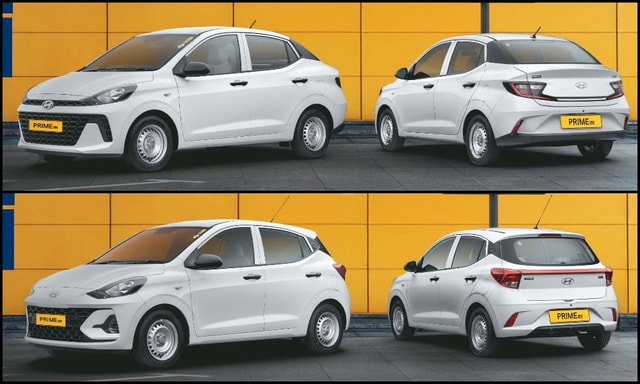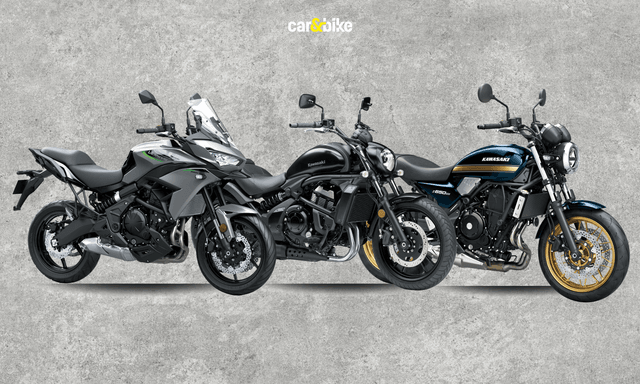Used Car 101: Decoding Types Of Vehicles And What Differentiates Each Body Style

- Vehicle types are defined by varying buyer needs, which also dictates their prices.
- Those looking for smaller vehicles would find hatchbacks to better suit their requirements.
- Growing popularity of SUVs means they’re now available at every price point.
For someone looking to purchase a used vehicle in India’s fast-evolving pre-owned car market, there is no shortage of options. There’s a vehicle for every buyer, at every price point, fulfilling specific requirements for each use case. However, it’s easy to get carried away when presented with a plethora of candidates to pick from. So, it’s crucial to nail down your requirements before you set off for the market, and accordingly zero in on what type of vehicle you want to buy. This article will help you understand the differences between the broad vehicles and body types, so you can make an informed choice when buying a used car.
Also Read: Used Car 101: Things To Know Before Buying A Used Car
A hatchback is usually the choice of vehicle for the first-time car buyer.
Hatchback
The smallest type of passenger vehicle there is, the humble hatchback is widely considered the entry point to the world of car ownership. Built for use in urban settings, hatchbacks on sale in India generally measure less than 4,000 mm in length (to qualify for tax benefits, but also for the sake of practicality) and adopt a front-wheel drive layout. They’re also usually offered with engines no bigger than 1,200 cc (petrol) or 1,500 cc (diesel), and are best suited for individuals or nuclear families residing in the metros. A wide variety of hatchbacks are available across sub-segments and price points – from the entry-level Maruti Suzuki Alto K10 and Renault Kwid, to the premium Maruti Suzuki Baleno and Tata Altroz.
Sedans have long been viewed as aspirational and a status symbol.
Sedan
Long considered a status symbol, demand for the sedan has wavered in recent years with buyers preferring larger, high-riding vehicles over it. Also referred to as a ‘three-box’ body style, the sedan is generally for those looking to upgrade from a hatchback, and are looking for more sophistication, luxury and practicality. One of the most obvious benefits a sedan offers is that of extra luggage space, as it has a proper boot, but buyers also enjoy a higher level of quality, a lengthier features list, enhanced interior space and more powerful engines. At the more affordable end of the scale are sub-compact sedans such as the Maruti Dzire and Honda Amaze, and above them sit compact sedans such as the Honda City and Hyundai Verna. Those keen on enjoying more luxury can look at the likes of the Mercedes-Benz C-Class, Audi A4 and BMW 3 Series, while customers interested in limousines will generally look at models such as the Mercedes-Benz S-Class and BMW 7 Series.
Also Read: Used Car 101: Which Used Car Should You Buy?
MPVs are favoured by those looking for a family-mover with practicality.
MPV
The multi-purpose vehicle – or MPV, as it is more commonly known – has long been the choice of the family man and woman. MPVs are generally larger than hatchbacks and sedans, and offer a greater degree of practicality and flexibility. The addition of an extra row of seats means an MPV can carry anywhere between 7 to 8 passengers, and the option of folding the seats down means an MPV can also be used to carry larger cargo as and when needed. Popular MPVs in India include the likes of the Maruti Suzuki Ertiga and Toyota Innova Crysta, but for those looking for an MPV on a budget, there’s also the novel Renault Triber.
The sheer road presence of an SUV often makes it an obvious choice for car buyers.
SUV
The three-letter acronym that dominates most car-buying-related conversations in India today has to be SUV, which stands for Sport Utility Vehicle. Originally envisioned as a vehicle meant for use over inhospitable terrain, the SUV has evolved to fit different needs and budgets, blending the luxury of a sedan with the versatility of an MPV, packaged into a butch-looking vehicle. While some SUVs continue to utilise the tough-as-nails body-on-frame construction, most modern-day SUVs have switched to a monocoque construction for more sophisticated on-road behaviour. There’s an SUV for every type of buyer – from the entry-level Tata Punch micro-SUV, sub-compact models such as the Maruti Brezza and Hyundai Venue, compact offerings such as the Hyundai Creta and Kia Seltos, to bigger, three-row SUVs such as the Tata Safari and MG Hector Plus, as well as the Toyota Fortuner and MG Gloster.
Also Read: Used Car 101: Top Features You Must Look For When Buying A Used Car
Sports cars, including coupes and convertibles, are a style statement and targeted at car enthusiasts.
Coupe/convertible
In India, a market that prioritises ‘more for less’, two-door vehicles – or coupes, as they are known – remain a rare sight. Coupes are generally sports cars designed for those seeking a new level of performance, and some are also available as a convertible, where the roof folds away to make the vehicle an open-top one. Such cars are mainly positioned in the luxury segment, are equipped with an impressively powerful engine and cost a pretty penny. Some examples include the BMW M2, BMW Z4 and Mercedes-Benz E-Class Cabriolet.
Latest News
 Jaiveer Mehra | Jan 1, 2026New Kia Seltos India Launch Tomorrow: Here’s What You Should KnowThe second-gen Seltos has grown in size, promising improved interior space while remaining a tech-laden package.1 min read
Jaiveer Mehra | Jan 1, 2026New Kia Seltos India Launch Tomorrow: Here’s What You Should KnowThe second-gen Seltos has grown in size, promising improved interior space while remaining a tech-laden package.1 min read Preetam Bora | Jan 1, 2026Opinion: 2025 – The Year Of the Mid-Size Motorcycle Boom In IndiaThe mid-size motorcycle segment, encompassing 250-500 cc, truly came into its own in 2025. But will it be sustained going forward with increased GST rates?1 min read
Preetam Bora | Jan 1, 2026Opinion: 2025 – The Year Of the Mid-Size Motorcycle Boom In IndiaThe mid-size motorcycle segment, encompassing 250-500 cc, truly came into its own in 2025. But will it be sustained going forward with increased GST rates?1 min read Jaiveer Mehra | Dec 31, 2025Hyundai Creta Sales Cross 2 Lakh Units In CY2025Carmaker said the Creta diesel still accounts for over 40 per cent of all units sold, while the share of first time buyers stands at over 30 per cent.1 min read
Jaiveer Mehra | Dec 31, 2025Hyundai Creta Sales Cross 2 Lakh Units In CY2025Carmaker said the Creta diesel still accounts for over 40 per cent of all units sold, while the share of first time buyers stands at over 30 per cent.1 min read Carandbike Team | Dec 30, 2025Hyundai Aura, Nios-Based Prime SD & Prime HB Taxis Launched In IndiaCarmaker rebrands fleet models under the Hyundai Prime brand rather than as separate variants of its passenger car range, as it previously did with the Xcent1 min read
Carandbike Team | Dec 30, 2025Hyundai Aura, Nios-Based Prime SD & Prime HB Taxis Launched In IndiaCarmaker rebrands fleet models under the Hyundai Prime brand rather than as separate variants of its passenger car range, as it previously did with the Xcent1 min read car&bike Team | Dec 30, 2025VinFast's V-Green Partners With Hindustan Petroleum To Setup EV Charging StationsV-Green is owned by Pham Nhat Vuong, Chairman of Vingroup Corporation and founder of VinFast.1 min read
car&bike Team | Dec 30, 2025VinFast's V-Green Partners With Hindustan Petroleum To Setup EV Charging StationsV-Green is owned by Pham Nhat Vuong, Chairman of Vingroup Corporation and founder of VinFast.1 min read Jafar Rizvi | Dec 30, 20252026 Kawasaki Versys 650, Vulcan S, Z650RS Launched: Now E20 CompatibleKawasaki has updated its 650cc range of motorcycles with E20 fuel compatibility and is offering new paint schemes.1 min read
Jafar Rizvi | Dec 30, 20252026 Kawasaki Versys 650, Vulcan S, Z650RS Launched: Now E20 CompatibleKawasaki has updated its 650cc range of motorcycles with E20 fuel compatibility and is offering new paint schemes.1 min read
 Preetam Bora | Dec 30, 2025TVS Orbiter Review: Real-World Performance and Range TestedThe TVS Orbiter is a promising electric scooter promising decent range, practicality and pricing. But is there any reason to avoid it? We spent a few days getting to know it better.9 mins read
Preetam Bora | Dec 30, 2025TVS Orbiter Review: Real-World Performance and Range TestedThe TVS Orbiter is a promising electric scooter promising decent range, practicality and pricing. But is there any reason to avoid it? We spent a few days getting to know it better.9 mins read Jafar Rizvi | Dec 24, 2025MG Windsor EV 38 kWh Long-Term Report: IntroductionThe Windsor EV has joined our garage, and before it settles into daily duty, I took it out to get a sense of what living with an electric car is like.4 mins read
Jafar Rizvi | Dec 24, 2025MG Windsor EV 38 kWh Long-Term Report: IntroductionThe Windsor EV has joined our garage, and before it settles into daily duty, I took it out to get a sense of what living with an electric car is like.4 mins read Seshan Vijayraghvan | Dec 23, 20252026 Kia Seltos Review: Formula Is Spot On, But Is The Timing Right?The 2nd-gen Kia Seltos has arrived, but it has the challenge of facing strong rivals like the Victoris and Sierra. The question is simple - Does it still have what it takes?9 mins read
Seshan Vijayraghvan | Dec 23, 20252026 Kia Seltos Review: Formula Is Spot On, But Is The Timing Right?The 2nd-gen Kia Seltos has arrived, but it has the challenge of facing strong rivals like the Victoris and Sierra. The question is simple - Does it still have what it takes?9 mins read car&bike Team | Dec 26, 2025Tata Punch EV Long-Term Second Report: Highway Performance, Pros & ConsAfter a week of living with the Tata Punch EV Long Range—including a proper Mumbai-Nashik highway test—we've learned what this little electric SUV is really made of.1 min read
car&bike Team | Dec 26, 2025Tata Punch EV Long-Term Second Report: Highway Performance, Pros & ConsAfter a week of living with the Tata Punch EV Long Range—including a proper Mumbai-Nashik highway test—we've learned what this little electric SUV is really made of.1 min read Seshan Vijayraghvan | Dec 22, 20252026 Tata Harrier & Safari 1.5 Hyperion Review: By The Power Of Petrol!The new Tata Harrier and Safari petrol packs a new 1.5-litre TGDI Hyperion engine, but is it an ideal alternative to the diesel version?7 mins read
Seshan Vijayraghvan | Dec 22, 20252026 Tata Harrier & Safari 1.5 Hyperion Review: By The Power Of Petrol!The new Tata Harrier and Safari petrol packs a new 1.5-litre TGDI Hyperion engine, but is it an ideal alternative to the diesel version?7 mins read
























































































































